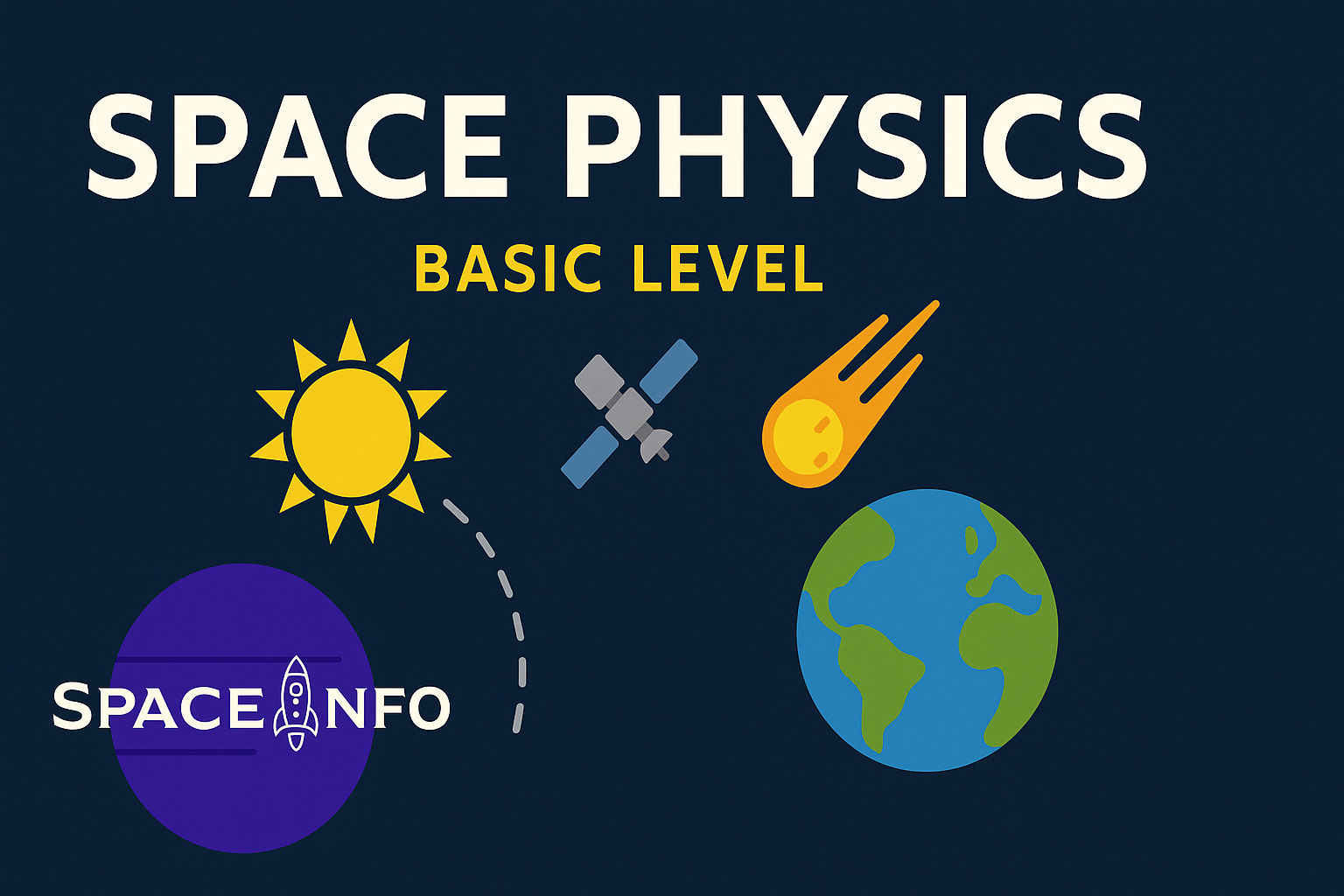Space Physics – Basics

What Will You Learn?
- You’ll understand solar-terrestrial interactions, magnetospheres, space plasmas, space weather and more!
Course Content
Introduction to Space Physics
Space physics is the branch of science that studies the physical phenomena occurring in space. We'll give you a rapid overview before focusing on specific topics!
Let me introduce our Spaceial Guest…
The Ionosphere and Magnetosphere
The ionosphere is a charged part of the Earth's atmosphere starting around 60 km up. Solar ultraviolet (UV) and X-ray radiation ionizes atoms and molecules there, creating free electrons and ions. It's critical for radio wave propagation, allowing long-distance communication.The magnetosphere is the area around Earth controlled by its magnetic field. It acts as a protective shield, deflecting most of the solar wind. Important features include:
Van Allen Radiation Belts: Doughnut-shaped zones of trapped high-energy particles.
Magnetotail: The elongated night-side part of the magnetosphere shaped by the solar wind.
🏋️♀️ About the Ionosphere
📡 Radio Signals & the Ionosphere
Solar Wind and Heliosphere
The solar wind is a constant stream of charged particles (mainly protons and electrons) flowing from the Sun’s upper atmosphere (the corona).
It carries the interplanetary magnetic field (IMF) throughout the solar system.
The heliosphere is the giant bubble formed by the solar wind that encases our solar system, extending well beyond Pluto.
The Voyager 1 spacecraft detected the heliopause (the boundary between the solar wind and interstellar space) in 2012.
Introduction about Solar Wind
A Little Deeper
☀️ The heliosphere
🌌 Key Interactions Between the Heliosphere and Interstellar Space
🌌 When the Sun moves into a new region of interstellar space
🏄 Consider this Scenario
📚 Books to Read
🎥 Videos to Watch
🌐 Web Resources
Plasma Physics in Space
A plasma is a gas where electrons are stripped from atoms, making it electrically conductive.
In space, plasma phenomena include:
Waves (like Alfvén waves).
Magnetic reconnection (when magnetic fields break and reconnect, releasing energy — important for solar flares and auroras).
Shocks (similar to sonic booms but in plasma, like the bow shock in front of Earth's magnetosphere).
Understanding Plasma – The Fourth State of Matter
🌌 What is Space Plasma?
⚡ Cosmic Rays and Shock Acceleration
🌌 Specific Cosmic Ray Sources
🌠 What Is a Supernova Remnant?
📦 What Is the Galactic Cosmic Ray Budget?
🚀 New Instruments, New Insights
Planetary Magnetospheres
Other planets have magnetospheres too:
Jupiter has the largest and most powerful magnetic field in the solar system.
Saturn, Mercury, and even Ganymede (a moon of Jupiter) have their own magnetic fields.
Studying these helps us understand how magnetic fields protect atmospheres and surfaces from the solar wind.
Introduction
Summary Table
🌌 Planetary Magnetospheres: A Journey Through Our Solar System
🌍 Earth’s Magnetosphere: Our Invisible Shield
🧲 Mercury’s Magnetosphere: A Small Field with a Big Story
♀️ Venus’ Magnetosphere: A Field Born Without a Core
🔴 Mars’ Magnetosphere: A Crustal Patchwork of Magnetic Memory
🌀 Jupiter’s Magnetosphere: A Giant Engine of Plasma and Power
🪐 Saturn’s Magnetosphere: A Ringed World of Quiet Power and Subtle Complexity
🧊 Uranus’ Magnetosphere: A Tilted, Twisted, and Tumbling Enigma
🌊 Neptune’s Magnetosphere: A Shifting Maze in the Deep
🌑 Magnetospheres of the Moon and Small Bodies: Ghost Fields and Fossil Remnants
Auroras
Auroras (Northern and Southern Lights) happen when charged particles from the solar wind spiral along magnetic field lines and crash into the atmosphere, exciting gases like oxygen and nitrogen to glow.
Their colors depend on the type of gas and the energy of the particles:
Green (oxygen at low altitudes).
Red (oxygen at higher altitudes).
Blue/purple (nitrogen).
🧩 Introduction
👩🏫 How scientists study them
⚡ What Is Magnetic Reconnection?
🌌 How Aurora Forecasting Works
🌌 Best Times to See Auroras
🚨 Alerting Systems and Apps
🕵️♀️ Tips for optimal aurora viewing
📸 Setup for photography
Historical Highlights
James Van Allen discovered the radiation belts in 1958 with Explorer I.
Other major missions:
Voyager 1 and 2 (exploring the outer planets and now interstellar space).
THEMIS (studying auroras).
Parker Solar Probe (currently studying the Sun's corona closely).
Cluster Mission (ESA's study of the magnetosphere in 3D).
5️⃣ Historical Events
🔴 The Carrington Event
🟠 May 1921 Geomagnetic Storm
🟡 August 1972 solar storms
🟢 March 1989 geomagnetic storm
🔵 Halloween Storms of 2003
☀️ Modern Carrington Event Simulation
🔚 Impact of a New Carrington Event
📚 External Resources
Applications
Protecting satellites and space missions (e.g., shielding electronics from radiation).
Space exploration safety (understanding radiation risks for astronauts).
Understanding universal plasma physics (connections to astrophysical jets, pulsars, black hole environments).
Everyday Life
🚀 How Space Physics Affects Satellite Communication and Navigation
⚡ What’s the Connection Between Space Physics and Power Grids?
🌍 What’s the Role of Space Physics in Weather Monitoring?
Space Weather: Tomorrow.io
🚀 What Does Space Physics Have to Do with Space Travel?
📡 What’s the Connection Between Space Physics and Radio Communication?
⚙️ What Do We Mean by “Technological Advancements” in Space Physics?
🌍 Why Early Warning Matters
Suggested Resources
Keep learning from external resources!
📚 Books
🎥 Videos and Lectures
🌐 Online Resources
🔥 Instructor’s tip!
Student Ratings & Reviews

No Review Yet
